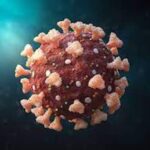Treatment is the second step; the first is prevention from the disease and stopping transmission
New Delhi, July 24, 2018 : The USFDA has given its approval for a new drug called Krintafel (tafenoquine) to treat P. vivax malaria relapse, which accounts for 34% of the estimated 13 million cases in India.
The drug has been developed by a not-for-profit research and industry partnership and is the first new treatment for the disease in more than 60 years. It is most likely to get fast-tracked approvals for use globally. It is a single-dose, ‘radical cure’ treatment (when given with chloroquine) for ages 16 years and older that kills dormant infection in the liver to prevent relapse.
India had an estimated 1.31 million malaria cases and 23,990 deaths in India, where more than half of the population (698 million) is at risk of infection, according to the World Malaria Report 2017 by WHO. India accounted for 6% of all malaria cases in the world, 6% of the deaths, and 51% of the global P. vivax cases.
Speaking about this, Padma Shri Awardee Dr KK Aggarwal, President, HCFI, said, “Availability of this drug in India has the possibility to make a huge difference to the treatment of malaria as P. vivax is sensitive to treatment. For India to achieve the target of eliminating malaria by 2030, it is mandatory that the transmission of P. vivax is curbed. India still has an extremely weak malaria surveillance system. Each case of malaria has been shown to cost households at least US $2.67 (range US $0.34–7.66) in direct out-of-pocket expenses. In adults, this leads to an average of 3.4 days (range 2–6 days) of lost productivity, at a minimum additional indirect cost of US $10.85. Despite efforts at various levels, this disease still remains an acute public health challenge.”
The ‘T3’ initiative of the WHO Global Malaria Program supports malaria-endemic countries in their efforts to achieve universal coverage with diagnostic testing and anti malarial treatment, as well as in strengthening their malaria surveillance systems T3 stands for Test, Treat, and Track.
Adding further, Dr Aggarwal, who is also the Vice President of CMAAO, said, “Malaria is entirely a preventable disease. It is also a treatable disease provided it is diagnosed and treated in time. The symptoms of malaria are non-specific and can be variable. Thus, it may be mistaken for other diseases such as viral infections, typhoid and the diagnosis of malaria may be missed as a result.”
Tafenoquine is a long-acting 8-aminoquinoline that, like primaquine, targets P. vivax hypnozoites. A phase IIb trial of adults in Asia and South America found that a single dose of tafenoquine in conjunction with chloroquine may be more effective at preventing P. vivax relapse than a 14-day course of primaquine with chloroquine. As with primaquine, tafenoquine can induce hemolytic anemia in patients with glucose-6-phosphate dehydrogenase (G6PD) deficiency.
Some tips from HCFI.
- Do not let water stagnate in your house and the surrounding areas. If any utensil or container that stores water is cleaned properly once in a week, there are no chances of mosquito breeding.
- Using mosquito nets/repellents in the night may not prevent malaria because these mosquitoes bite during the day time.
- Mosquitoes that do not produce a sound do not cause diseases.
- Wearing full sleeves shirt and trousers can prevent mosquito bites. Mosquito repellent can be helpful during the day.







